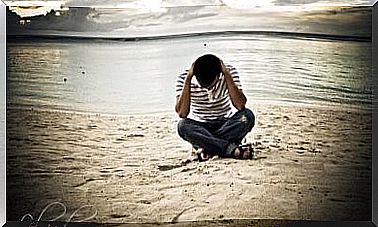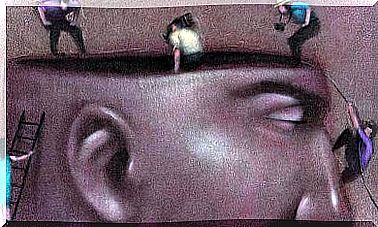Cinema As A Psychotherapeutic Tool

Have you ever changed the way you see a problem after watching a movie? Or maybe to have adopted a different perspective to face new situations? Or, again, have you ever used a film to distance yourself from everything in a hard moment in your life? Cinema as a psychotherapeutic tool offers multiple benefits. For this, it is increasingly used by health professionals.
Watching a film allows viewers, and therefore patients, to obtain information of a very different nature: linguistic, visuospatial , interpersonal and intrapsychic. In other words, what is commonly called “kinotherapy” can make psychological treatment a space for complete, integral and intersensory learning.
As with books
According to Bruce Skalarew, psychiatrist and psychoanalyst co-chair of the Forum for Psychoanalytic Study of Film, film therapy has followed the same channels as bibliotherapy. In other words, the use of books and reading in clinical practice. This doctor defines the seventh art as the tool that helps improve mental health . Likewise, consider this therapeutic means as a good complement to traditional ones.

Wolz explains that cinema as a psychotherapeutic tool allows the psychologist to find support in images, music, tone, characters, settings and theatrical elements . In addition, it has the power to facilitate self-understanding and achieve what it calls “emotional discharge”. Ultimately, this art, he says, helps us change our habits and evolve.
Personal reflection
What would I do if something like this happened to me? How would my partner react if such a misfortune happened to us? Sometimes films lead us to ask ourselves questions about situations that we otherwise would not be able to imagine. We often put ourselves in the shoes of the characters and try to think or see through them. This helps those receiving psychotherapeutic treatment to realize an introspection of their thoughts, feelings and emotions, present and future.
Cinema as a psychotherapeutic tool: how to apply it?
According to Gary Solomon, one of the first psychologists who addressed the issue of using films as therapy, it is to choose films or short films that reflect the patient’s problem. In other words, the film must be as similar as possible to the victim’s current or traumatic situation .
It is essential that the therapist and the patient converse before watching the film. Both must understand that it is necessary to carry out a conscious exercise of analysis of the same, so that the practitioner can recognize and examine the patient’s reactions.
Once viewed, it is advisable for the victim to explain the connections and similarities he found between the film and his life. It is good to use the imagination and to identify with some character in the film (Berg-Cross, Jennings, & Baruch, 1990).

Empathy and a new perspective
One of the strengths of this technique is that it can improve patients’ social and communication skills. It serves as a practical example of situations in which you can develop empathy and make the person’s feelings, emotions and desires conscious.
With this, what is known as the theory of mind can be put into practice; in other words, the ability to understand our own emotional processes and to understand and reflect on the feelings and thoughts of others. And all this through a sequence of images and ingenious dialogues, thanks to the magic of cinema.
This technique allows you to work on the basis of concrete scenes, enhancing the issue to be dealt with even more. Finally, the characters can be analyzed in detail, being able to appreciate every change and detail as many times as you want to review the film. This allows to find more similarities and differences between the patient’s behavior and that of the actor.
Cinema as a psychotherapeutic tool is little known, although it is increasingly used as a complementary strategy to traditional practice. However, even if it works with most patients, it is necessary to avoid using it with people suffering from psychotic disorders. In these cases, there is no guarantee that kinotherapy will offer benefits.









